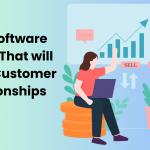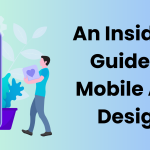In the fast-paced world of ecommerce, creating a seamless user experience is the key to success. With millions of online businesses vying for customers’ attention, it is crucial for ecommerce websites to stand out and provide a user-friendly environment that encourages visitors to become loyal customers. While many elements contribute to an effective ecommerce platform, there is one missing element that can elevate the user experience and drive sales: a seamless and intuitive website design. You may hire third-party web design services for a smooth and engaging design.

Gone are the days when customers were willing to overlook clunky interfaces, slow-loading pages, and confusing navigation. Today’s digital consumers have high expectations and demand an exceptional online shopping experience. They seek websites that are easy to navigate, appealing, and functional across devices. They want to find what they need, make purchases, and trust that their information is secure. To meet these expectations and deliver user experience, ecommerce businesses must focus on crafting a seamless journey for their customers.
In this article, we will explore the importance of affordable web design services in creating a convenient user experience and implore practical tips to implement on an ecommerce website.
What Could be Possible Pieces of Puzzle?
User-Centric Design:
The foundation of a seamless user experience lies in user-centric design. To create a website that meets users’ needs and expectations, it is important to understand their behavior, preferences, and pain points. Usability testing, questionnaires, and interviews may all be used to gather important information about user preferences and inform design choices. By putting the user at the center of the design process, you can ensure that your website caters to their specific requirements, resulting in a more engaging and satisfying experience.
Streamline User Journey with Quick Navigation:
Navigation is essential for directing visitors to your e-commerce website. Visitors may easily locate what they’re searching for thanks to an easy-to-use navigation system. Implementing a logical and hierarchical menu structure, with concise and descriptive labels, ensures that users can navigate between categories, products, and pages. Consider incorporating breadcrumb navigation to provide users with a visual trail of their location within the website, allowing for seamless backtracking if needed.
Streamlined Checkout Process:
Any friction or misunderstanding during the checkout process, which is a crucial part of the consumer journey, might result in cart abandonment. Aim for clarity and simplicity to provide a smooth checkout experience. Reduce the amount of time needed to finish a transaction and get rid of any extra form fields. Give users a progress bar to see where they are in the process, and give them a choice of many safe payment methods to suit their preferences. Consider integrating guest checkout as well to lower conversion barriers by enabling users to make purchases without creating an account.
Responsive Mobile-First Design:
In today’s mobile-dominated world, having a responsive design is no longer a luxury but a necessity. With a significant portion of online traffic coming from mobile devices, it is crucial to ensure that your ecommerce website is optimized for different screen sizes and resolutions. Your website can automatically adjust to different platforms thanks to responsive design, offering a consistent and user-friendly experience on PCs, smartphones, and tablets. You may meet the demands of mobile consumers and broaden your audience by putting a priority on responsive design.
Fast Loading Speed:
Slow-loading websites are a major turnoff for users. Focus on optimizing website performance by minimizing file sizes, leveraging caching techniques, and utilizing CDNs to ensure fast-loading pages. Check and optimize loading speed to enhance user experience.
Visual Appeal and Consistency:
Your ecommerce website’s aesthetic attractiveness is essential for grabbing visitors’ attention and building trust. Make sure your offers are visually appealing and correct by using high-quality product photographs and videos to highlight them. Keep your website’s aesthetic features, such as typeface, color schemes, and branding elements, consistent. A website with a consistent visual style exudes professionalism and improves user interaction.
Offer Comprehensive Services:
Expand your web design services to include user experience (UX) design, usability testing, and conversion rate optimization. By offering a holistic approach to web design, you can differentiate yourself from competitors and provide clients with comprehensive solutions that deliver exceptional user experiences.
Stay Updated with Design Trends:
Educate yourself and your team on the latest design trends, best practices, and emerging technologies. Stay informed about advancements in user interface (UI) design, responsive design techniques, and user experience research to ensure your services remain cutting-edge.
Collaborate with Clients:
Foster open communication and collaboration with your clients throughout the design process. Involve them in user research, usability testing, and design iterations to ensure their goals and vision align with the user experience you’re crafting.
Clear Call-to-Action:
A seamless user experience involves guiding users towards the desired actions. Clear and prominent call-to-action (CTA) buttons encourage users to take specific steps, such as adding items to the cart, proceeding to checkout, or subscribing to newsletters. Make sure your CTAs stand out visually by using color contrast and size, and use persuasive and action-oriented content. Place CTAs at key touchpoints to ease user flow and simplify the path to conversion.
The Bottom Line
Creating a seamless user experience is the missing element that can differentiate your ecommerce website from the competition. By adopting a user-centric design approach, optimizing navigation, streamlining the checkout process, implementing responsive design, prioritizing loading speed, maintaining visual appeal and consistency, and incorporating clear call-to-action elements, you can create an exceptional user experience that drives engagement and boosts conversions. Remember, a seamless user experience not only benefits your customers but also contributes to the long-term success of your ecommerce venture.






